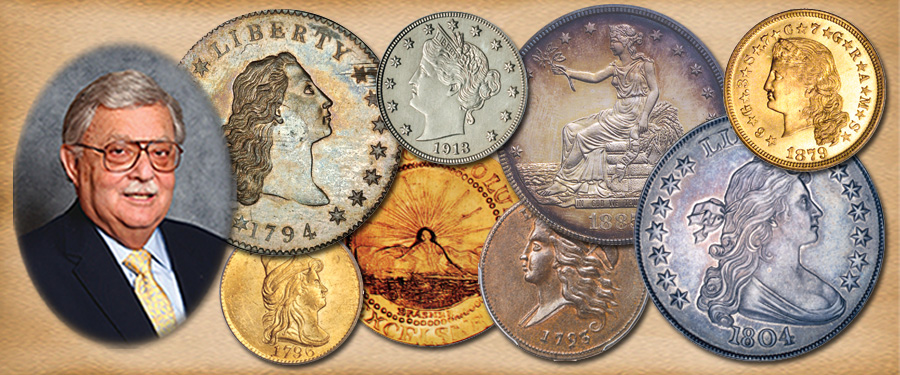
As I noted, rarities are virtually impossible to make. In contrast, a rarity does not always remain rare or even scarce. Just as an increase in demand affects rarity (as for the 1895 Morgan dollar discussed last week), a change in supply can make even a coin that had been nearly impossible to find possible, and sometimes even easy to locate. How does this happen? It can happen in various ways as coins that were unknown or forgotten, become available to delighted collectors.
In this story I will tell of two instances — one involving Bust half dollars and one double eagles ($20 gold coins) — that I personally experienced during my early days as a professional numismatist.
In the early 1950s Stack’s was called upon to visit a bank in Bridgeton, New Jersey, a bank that had been established over a century before. My uncle, Joseph, and my cousin, Norman, drove out to see what was there. When they got there, they were shown sacks of silver Bust half dollars.
In the 1830s the price of silver was going up, and half dollars from the early 19th century would soon be worth more as a precious metal than face value. The president of the New Jersey bank felt he could profit by saving half dollars and decided not to place them back into circulation. He placed his entire inventory into his vaults, and over the decades they grew in value. Time passed and the bags remained in the vault until the early 1950s when the bank was to be sold including this "silver asset.”
So Stack’s bought the coins for their numismatic value and sold half dollars from the hoard for several decades. We had a range of dates and die varieties and could slowly release them to avoid flooding the market. Even so, 10,000 pieces was a lot of half dollars and in some cases rarity became scarcity and scarcity became available.
Another example occurred in 1933 and thereafter, when President Roosevelt wanted to raise the price of gold, so our Treasury could increase the value of its gold. First gold coins were called in, with penalties placed on those who did not comply. Fear of a 10-year prison term and fines as high as $10,000 scared much of the public. This was a tool the government used to get the country out of the Depression, and make us more liquid. Gold was valued at $20.67 an ounce for decades, and was now quoted at $35 an ounce.
There was an exception that exempted collectors who held gold coins as part of a collection from having to surrender them. Collectors in America, who could afford to save gold coins during the difficult Depression and World War II years, were able to take advantage of this loophole and build impressive collections. However, there were always gaps that they could not fill, and many rarities were just not available to those trying to complete collections.
In the years before, America had used gold to buy goods and services all over the world. Banks and central treasuries in other nations either melted the gold coins or stored them for safe keeping. In one instance, before and during World War II, Germany confiscated gold coins in mass to purchase arms and material to pursue their goal of trying to conquer the world. After the war some of these U.S. gold coins were returned to banks where they were held as assets. In America, no one knew what coins might be in vaults in that nation or in other parts of the globe.
In the 1950s, Americans building collections realized that some dates and mintmarks of double eagles were scarce or rare. Prices for these particular issues started to rise. However, double eagles began to be found by dealers and traders in European banks and other locations, and scarce and rare dates were purchased at a substantial premium and brought back to America. Certain dates that had been considered scarce or rare suddenly were available and the value dropped. Over time, many such double eagles re-entered the United States and the market for some issues was changed forever. However, this did not happen overnight and in my next article I will reminisce about one particular rare double eagle and one particular well-known collector.





